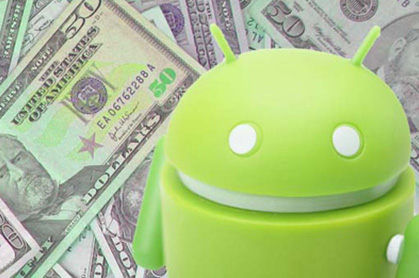This article is more than 1 year old
Microsoft haters: You gotta lop off a lot of legs to slay Ballmer's monster
Terrifying ten-legged beast of Redmond is not dead yet
Comment Contrary to increasingly popular belief, Microsoft is not a “dead” company, nor at immediate risk of collapse.
I do, however, believe that Microsoft’s “Windows on the endpoint” monopoly days have passed, that Microsoft’s senior management are aware of this and are actively taking steps to compensate. Similarly, I believe that during the inevitable period of transition that occurs during such a corporate restructure Microsoft remains vulnerable.
It has become a popular internet pastime enjoyed by many – myself included – to hurl invectives at CEO Steve Ballmer and the rest of Microsoft's management. This is done largely because the decisions made regarding many Microsoft products have resulted in changes that many of us strongly dislike. Many more get added incentive for vitriol because Microsoft is insistent on keeping the exciting new stuff (such as VDI) licensed under what I can only honestly describe as "completely insane" terms and price points.
The truth is that Microsoft can't keep us all happy. The traditional desktop and productivity suite monopolies were never going to last; a basic analysis of history should be able to dig up enough examples to prove that. Let's put all the "death of the PC" fear mongering to one side and take a look at the big picture of Microsoft's world. The raw economics, strategy and the competitive landscape it occupies.
The end of the desktop monopoly
For decades human interface to data stored on a computer network (endpoints) was accomplished through a small number of operating systems. Microsoft (and to a far lesser extent Apple) has held the lion’s share of this market, dwarfing the share of any competitors.
Other operating systems have seen significant deployments in embedded devices and servers. Until recently, however, Microsoft’s domination of the endpoint has been unrivalled. The explosion of mobile device usage has changed this; in 2011 Windows’ share of the endpoint market was surpassed by the combined might of Apple’s iOS and Google’s Android for the first time.
In 1983 Microsoft held a 25 per cent share of the desktop computer operating system market; commendable given the diversity of available platforms and the fierce competition that existed during the early days of the PC revolution. 20 years later its Windows OS had achieved endpoint penetration of 96 per cent; a functional monopoly. By 2012 Windows’ endpoint share had been reduced to 35 per cent.
Competing against free

Android and other 'good enough' rivals ... We're HEEE-ERE!
The day that Android was announced, Microsoft's endpoint monopoly was done for. Apple sitting up in the high-margin area vacuuming money from a niche was no real threat to Microsoft. Google's strategy, however, is lethal.
The hardware side of endpoint economics has been ground down into the dirt for ages now. You can't play the game unless you are using cheap Asian labour to make your parts; even then, you have to "value add" with software just to break even. This was fantastic for Microsoft; theirs was the biggest value-add stack for endpoints out there and they ate the lion's share of the margins in the PC industry for decades.
Along comes Google and they just give the operating system away for free. Unlike traditional open-source OSes this was a system developed with a focus on the end-user experience and backed by a Goliath. Microsoft was no longer competing against "free", it was competing against free that was "good enough". With Android, Google started to gain knowledge about how to build and design an operating system. Limited functionality "good enough" operating systems served a strategic purpose for Google and an entry into the traditional "PC" space was all but assured. Sure enough; Google announced Chrome OS less than two years later.
The initial versions of Chrome OS were absolute pants, but they were enough to demonstrate Google's commitment to commoditising the desktop. The strategy was simple: Google wanted to provide a simplistic, reliable platform for users to engage Software as a Service (SaaS). Google can monetize that. Google didn't – and doesn't – have to win with the first move. It has years to slowly chip away at traditional notions of computing.
A decade ago "the cloud" was a joke. Today few seem to make entirely local applications; everything from management applications to my new thermostat all have a "cloud" component. A decade from now even the embedded systems powering "the internet of things" will be utterly dependant on the SaaS cloud, and we'll be looking at entirely local apps as niche and quaint.
